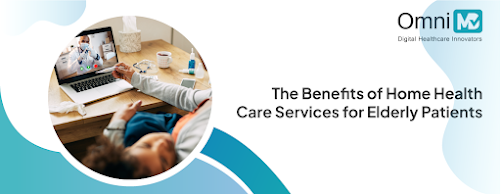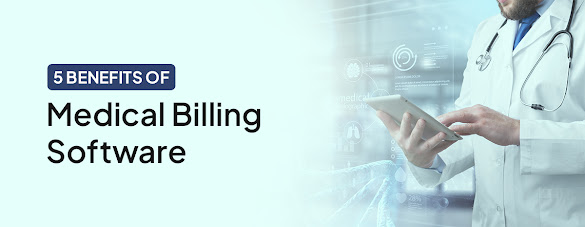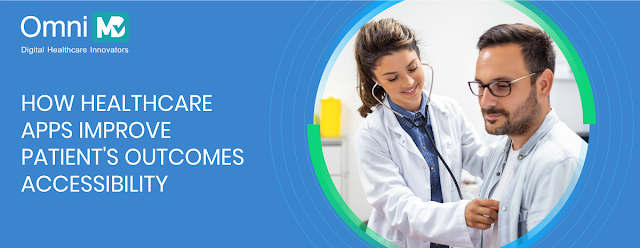Empowering Patients with Remote Monitoring Services: Bridging the Distance Gap
Remote patient monitoring services
(RPM) have seen significant growth recently. These services have been
positively impacted by technological advancements that can make them more
accessible, efficient, and cost-effective.
Remote patient monitoring uses
appropriate technology to collect and analyze patient data through digital
services. This helps patients avail themselves of healthcare services without
remaining present at a healthcare facility. Remote patient monitoring services
are just one of how patient healthcare needs can be met. Let us look at some of
the statistics involving the use of RPM.
The Benefits of RPM – a Few Statistics
Look at a few statistics concerning
Remote Patient Monitoring Services in the USA. Research
and Markets predict that the Global RPM systems market will be worth over $1.7
billion by 2027. This is nearly 128% up from the opportunity the market
currently represents. Further, it can potentially prevent between
460,000 and 627,000 heart failure-related hospital readmissions yearly. Also, according
to Insider Intelligence, an estimated 70.6 million
US patients, which means 26.2% of the US population, will use RPM tools by
2025. These statistics indicate the benefits of using RPM. This
technology is convenient for patients as well as health professionals. It is
proving to be more cost-effective and accurate than traditional practices.
Also, A KLAS Research report that surveyed 25
healthcare organizations found that 38% of healthcare organizations that ran
RPM programs focused on chronic care management reported reduced admissions. At
the same time, 17% cited cost reduction.
What are RPM Devices?
Now, let’s look at some RPM devices used to collect and transmit patient data. These devices include wearable heart monitors, skin patches, glucose level monitors, trackers, and fitness devices. Such devices acquire, store, process, and transmit patient data to healthcare professionals for monitoring. Now that we have looked at the different kinds of RPM devices let us investigate how RPM empowers patients and bridges the distance gap.
- Easy and Straightforward Access to Healthcare
The immense benefits of remote patient monitoring became evident during the recent COVID-19 pandemic. Also, patients in remote areas stand to gain significantly from RPM services. With the help of RPM, patients can avail themselves of hospital facilities and professional healthcare support & treatment with relative ease. Thus, patients can seek top-of-the-line healthcare services, online consultations, and remote monitoring.
2. Improved Quality
Remote Patient Monitoring enables healthcare professionals to get more accurate information to provide a virtual diagnosis to the patient. In this case, patients do not have to wait in long queues or travel several miles to a healthcare center to avail themselves of healthcare services. There are fewer chances of physician burnout for physicians.
3. Improved Patient Comfort
The entire RPM technology is focused on improved patient experience. This makes it easier and less intimidating for the patient to obtain medical advice. The whole experience makes the RPM process more comfortable for the healthcare practitioner and the patient.
4. Improved and Individualized Attention
Patients treated remotely are more likely to receive improved care and individualized attention. Data is collected with the help of biometric devices, which means there is less chance of misdiagnosis when compared to manual data collection.
Through connected devices, patients give continuous feedback while receiving healthcare services remotely. Constant feedback could be through the portal you are logged into or even through the readings that your remote monitoring device continuously relays to your healthcare center. This feedback helps care providers constantly improve themselves and provides better solutions and services to patients. Ultimately, healthcare management systems can be further enhanced and benefit society.
6. Reduces Heavy Hospital Workload
During the pandemic, hospital systems were put under extreme stress, which resulted in increased healthcare worker burnout, exhaustion, and trauma. The entire healthcare ecosystem was on the brink of collapse. This has renewed the focus on RPM, which does not burden healthcare facilities but augments their capabilities synergistically.
RPM — Bridging the Distance Gap
As we advance, the future of RPM is
remote. With advancements in technology, healthcare standards have improved.
However, a lot has yet to be achieved. RPM is a step in the right direction as
it is gaining more and more acceptance daily. The ultimate aim of any medical
technology is to bridge the gap between patients and care professionals. RPM
helps bridge this gap through the appropriate and judicious use of
technology.
Through suitable analysis of RPM data
such as vital signs, blood pressure, blood sugar, heart rate, and others, it
becomes easy for hospitals and medical professionals to devise an appropriate
medical treatment for remote patients.
Conclusion
In a post-pandemic scenario, people
are adjusted to obtaining remote treatment in a home-based environment. Indeed,
it is worth investing in RPM technology to make people comfortable at home.
Medical centers can look forward to expanding their service offering and
including RMP as a viable option. The days are not far when RPM will become a
preferred mode of treatment and supersede the conventional method of treatment
where the patient meets a healthcare professional in traditional hospital
surroundings. To
learn more about how our remote monitoring (RPM) services can help you improve
your patient experience, visit www.omnimd.com
for further information. Alternatively, email marketingmd@omnimd.com or call us at 1(844)666-4631 to talk to
an expert.




Comments
Post a Comment